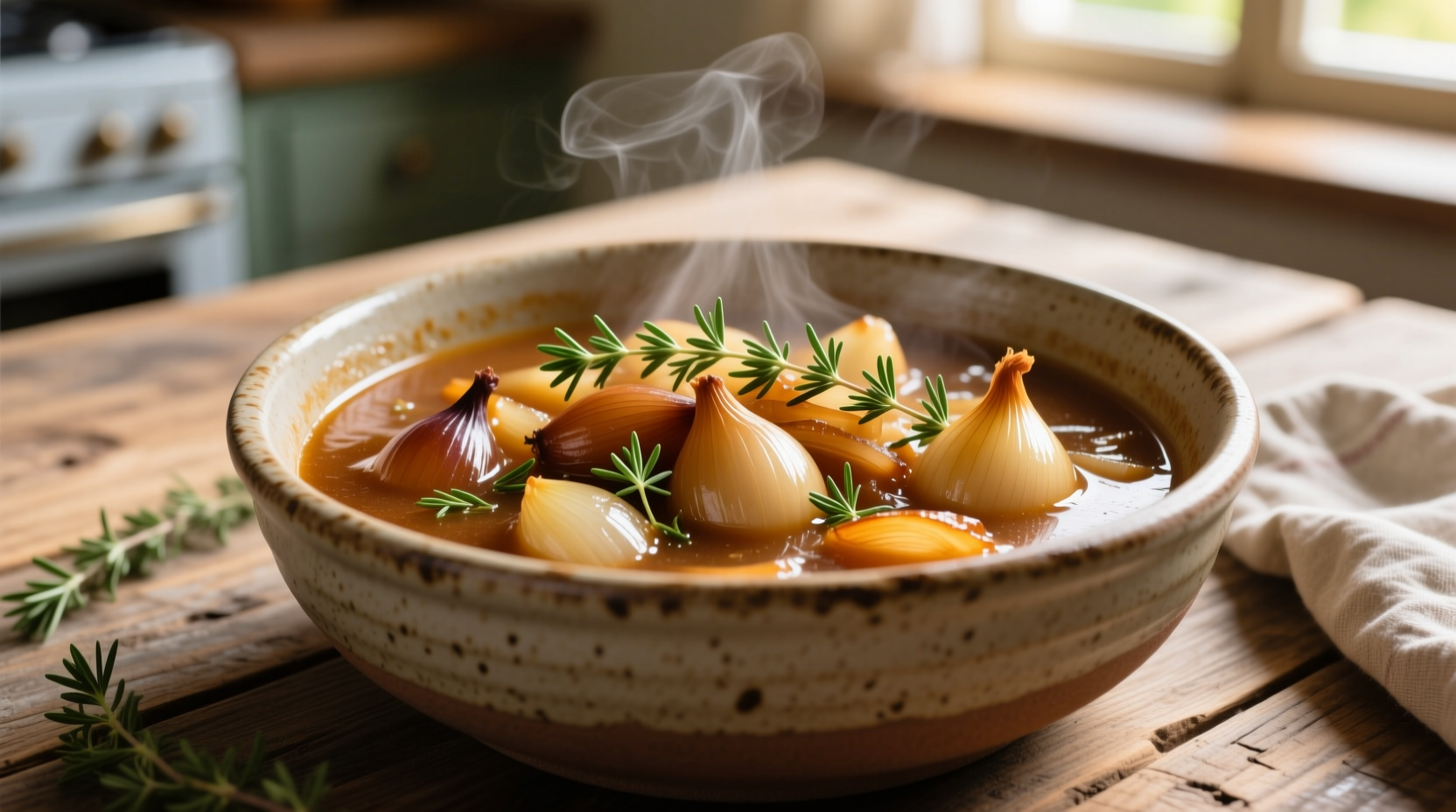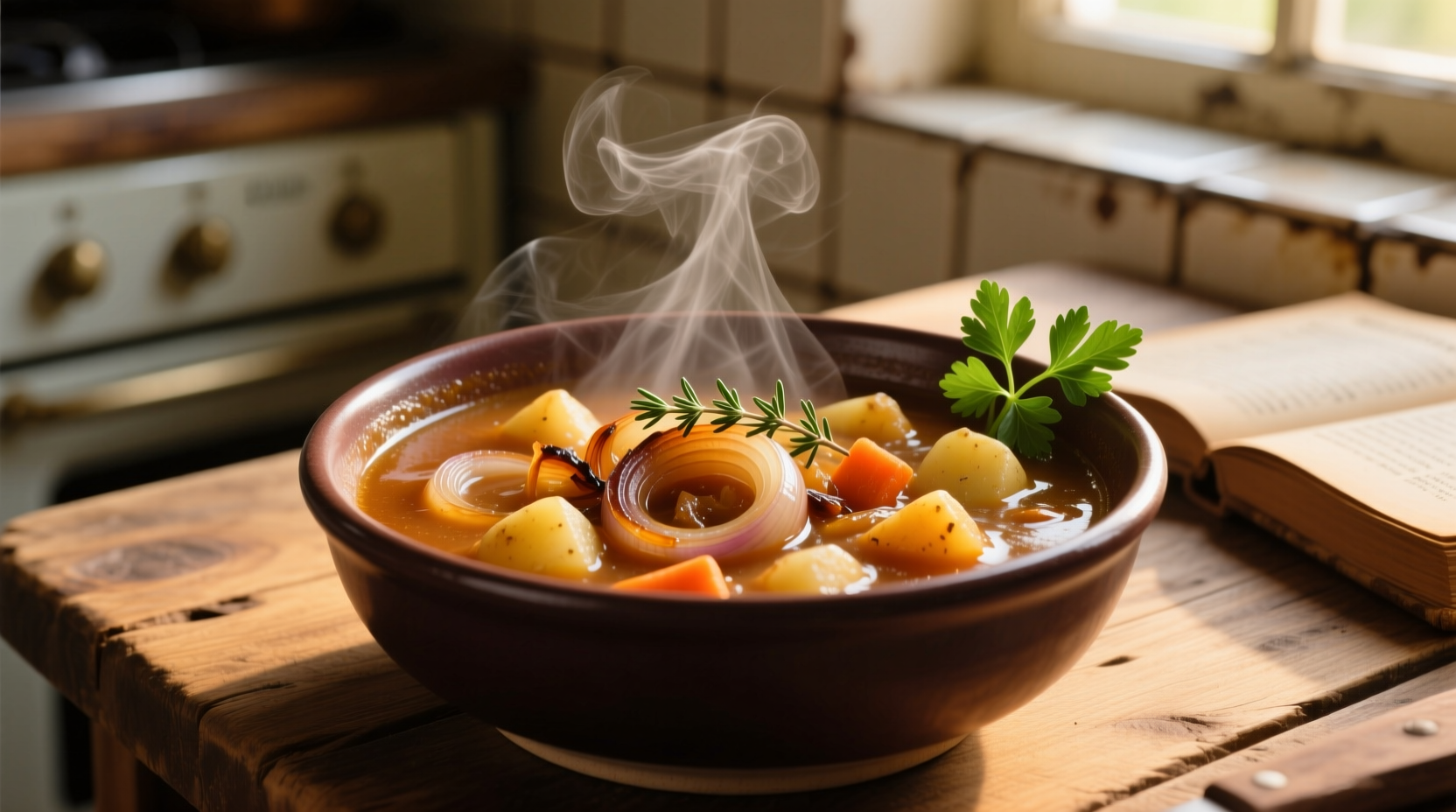Master the art of onion stew with this comprehensive guide from a French culinary expert. Whether you're a beginner cook or seasoned chef, you'll discover the science behind caramelization, regional variations, and professional techniques that transform humble onions into a restaurant-quality dish. Learn exactly how long to cook onions, which wine enhances flavor best, and how to avoid common mistakes that lead to bitter results.
The Magic of Slow-Cooked Onions
Onion stew's transformation begins with the Maillard reaction—a chemical process where sugars and amino acids interact under heat, creating hundreds of new flavor compounds. Unlike quick sautéing, proper onion stew requires 45-60 minutes of slow cooking to develop deep umami notes without burning. The key is maintaining medium-low heat while occasionally stirring, allowing onions to release their natural sugars gradually.
| Cooking Stage | Time Required | Visual Cues | Flavor Development |
|---|---|---|---|
| Initial Softening | 10-15 minutes | Translucent appearance | Mild sweetness emerges |
| Early Caramelization | 20-30 minutes | Light golden edges | Nutty undertones develop |
| Deep Caramelization | 45-60 minutes | Rich mahogany color | Complex sweet-savory balance |
Historical Journey of Onion Stew
Onion-based dishes have nourished civilizations for millennia. Archaeological evidence shows Bronze Age Europeans simmered onions in clay pots as early as 2000 BCE. The modern French onion stew evolved from 18th century Parisian street food, where workers sought affordable, warming meals. By the 1860s, it appeared in Le Guide Culinaire by Auguste Escoffier, cementing its place in culinary history. During WWII rationing, onion stew became a creative solution for making limited ingredients satisfying—a tradition that continues in modern zero-waste cooking movements.
Perfect Onion Stew Recipe: Step-by-Step
Ingredients for 4 servings: 6 large yellow onions (about 3 lbs), 3 tbsp unsalted butter, 1 tbsp olive oil, 1 tsp sugar, 2 cloves garlic (minced), 1 cup dry white wine (like Sauvignon Blanc), 4 cups beef or vegetable broth, 2 sprigs fresh thyme, 1 bay leaf, salt and pepper to taste
Equipment: Heavy-bottomed Dutch oven, sharp chef's knife, wooden spoon
- Prep onions: Slice onions pole-to-pole (not crosswise) for even cooking. This maintains cell structure for better caramelization.
- Start cooking: Melt butter with olive oil over medium heat. Add onions, sugar, and pinch of salt. Stir to coat.
- First 20 minutes: Cook undisturbed for 10 minutes, then stir. Repeat. Onions should sweat, not brown.
- Middle phase: Reduce heat to medium-low. Stir every 5-7 minutes as onions gradually turn golden.
- Wine deglaze: When onions reach light amber color, add wine to dissolve browned bits (fond) from pot bottom.
- Simmer: Add broth, thyme, and bay leaf. Simmer covered for 20 minutes until onions are meltingly tender.
Pro Tip: For deeper flavor, add 1 tbsp soy sauce or 2 anchovy fillets during simmering—they dissolve completely while enhancing umami without noticeable taste.

Regional Variations & Creative Twists
While French onion stew remains most famous, cultural adaptations offer exciting possibilities:
- German Zwiebelrostbraten: Served over sliced rye bread with crispy beef topping
- Provençal version: Adds orange zest and star anise for floral notes
- American Midwest style: Incorporates apple cider vinegar for brightness
- Vegan adaptation: Use mushroom broth and omit wine for depth
Context matters: In high-humidity environments, extend initial cooking time by 5-10 minutes to evaporate excess moisture. At high altitudes above 5,000 feet, reduce liquid by 25% since water boils at lower temperatures.
Serving Suggestions & Storage
Serve onion stew piping hot in pre-warmed bowls. Classic French presentation includes toasted baguette slices and Gruyère cheese melted on top. For lighter meals, pair with green salad. Leftovers improve overnight as flavors meld—store in airtight container for up to 4 days or freeze for 3 months. Reheat gently on stove with splash of broth to restore consistency.
Troubleshooting Common Issues
Bitter onions? You likely cooked at too high heat. Start over at lower temperature—proper caramelization never requires burning.
Too watery? Remove lid during final 10 minutes of cooking to evaporate excess liquid.
Lacking depth? Add 1 tsp fish sauce or ½ tsp smoked paprika—these enhance umami without being detectable.
Frequently Asked Questions
Can I make onion stew without wine? Yes—substitute with additional ½ cup broth plus 1 tbsp apple cider vinegar for acidity.
Which onion variety works best? Yellow onions provide ideal balance of sweetness and pungency. Avoid red onions which turn muddy when cooked.
How do I prevent sticking? Use heavy-bottomed pot and maintain consistent medium-low heat. Stir only when necessary to release fond.











 浙公网安备
33010002000092号
浙公网安备
33010002000092号 浙B2-20120091-4
浙B2-20120091-4